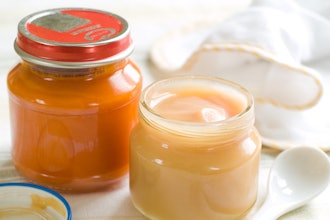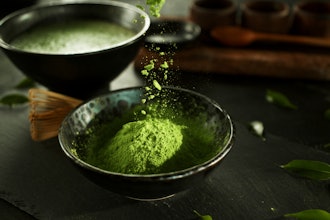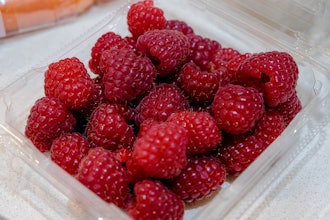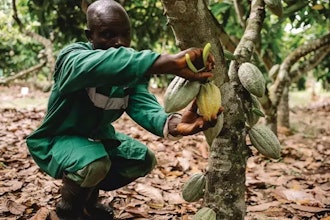
The snack market is booming in America. Last year, the segment was valued at more than $170 billion, driving interest from operators of all sizes to make changes to grab a bigger slice of the snack cake.
For some, it has been a tough nut to crack, especially as many have faced consumer backlash over rising prices and "shrinkflation."
Still, the global snack market, according to Grand View Research, is projected to reach nearly $1 trillion by 2030—about $150 billion of that will be in the U.S. While consumers want more flavors and variety, some companies focus on quality, making sure the product lineup doesn't get twisted with novelty collaborations. Snack makers also face a more health-conscious consumer who tends to get salty if their options aren't convenient enough.
In this interview with Food Manufacturing, Misty Skolnick, co-owner of Uncle Jerry's Pretzels, discusses the pretzel maker's nearly 40-year evolution, how it manages its ingredient supply chain, and the new challenges facing an increasingly unpredictable snack market.
Food Manufacturing: How did Uncle Jerry's get its start?
Misty Skolnick: Uncle Jerry's was born out of a passion for old-fashioned, Pennsylvania Dutch-style sourdough pretzels. Jerry started small in 1988, going door to door and selling the pretzels at delis, grocery stores, and specialty markets in Philadelphia. From day one, we focused on simplicity, quality, and that authentic homemade taste. Jerry still makes deliveries to this day!
FM: How has the company evolved over the years?
MS: We've grown steadily while keeping our core values intact—no artificial ingredients, no shortcuts. Over the years, we've expanded our distribution nationally and added online sales to reach pretzel lovers everywhere. Despite growth, we are still a family-owned and operated business.
FM: How would you describe the company's workforce? Does it face any new challenges?
MS: Our team is tight-knit and dedicated, many of whom have been with us for decades. Like many small manufacturers, we face challenges as we grow. But our employees' commitment and shared pride in the product keep us moving forward.
FM: How has the pretzel market changed since 1988?
MS: The market has become more crowded and trend-driven, with new flavors, shapes, and formats popping up constantly. Consumers are also more ingredient-conscious, which works in our favor. We've stayed relevant by sticking to clean ingredients and timeless quality.
FM: How does Uncle Jerry's manage its supply chain to ensure it uses quality ingredients?
MS: We work closely with long-standing, trusted suppliers who share our standards for high-quality and locally sourced ingredients when possible. Each batch of pretzels is hand-rolled and slow-baked, which we monitor for quality assurance. That hands-on approach is how we maintain consistency and integrity.
FM: Has Uncle Jerry's experienced any difficulties as a result of the new tariffs?
MS: Yes, like many small food manufacturers, we've seen rising costs on some inputs. While we try to absorb as much as we can, it's an ongoing balancing act. Transparency and careful planning help us weather these pressures without compromising on quality.
FM: How do tariffs compare to prior challenges the company has faced in the past?
MS: We've always faced challenges—from scaling operations to navigating supply chain disruptions—but tariffs add a layer of unpredictability. Still, compared to starting a business from scratch, we've learned how to adapt, stay agile, and persevere. It's all part of staying independent and resilient.
FM: What are your predictions for the snack market going forward?
MS: Consumers are looking for snacks that are both nostalgic and health-conscious—clean labels, high-protein, plant-based. We expect continued growth in grab-and-go formats and interest in traditional snacks with a modern twist. Long term, sustainability and traceability will play even bigger roles.
FM: Finally, according to ChatGPT, these are the top three new product ideas for the pretzel snack category. Which do you think holds the most promise?
- Pretzel Sushi: Rolled soft pretzel dough with savory fillings, sliced like sushi.
- Pretzel Waffles: Pressed pretzel dough cooked in a waffle iron—soft inside, crispy outside.
- Mini Pretzel Pops: Skewered mini pretzels like cake pops, with flavored dips.
MS: I'll admit, Pretzel Sushi made us smile! It's hard to say which holds the most promise, as they are all unique offerings. They all sound fun and inventive while catering to very different markets. It's hard to say how consumers will respond, but we're confident that a classic, hand-twisted sourdough pretzel will always remain the gold standard.
Editor's Note: Misty sent the Food Manufacturing staff a few bags of Uncle Jerry's pretzels to sample and they are pretty great.
 TastyUncle Jerry's Pretzels
TastyUncle Jerry's Pretzels






















